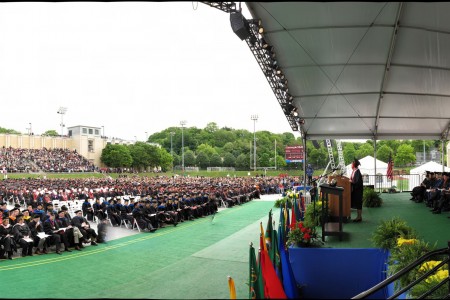Carnegie Mellon University
Vision-based Aircraft Detection and Tracking for Detect-and-Avoid
Abstract: Detect-and-Avoid (DAA) capabilities are critical for autonomous operations of small unmanned aircraft systems (sUAS). Traditionally DAA systems for large aircraft have been ground and radar-based. Due to the size, weight, and power (SWaP) constraints of sUAS, current DAA systems rely mainly on vision-based sensors and ADS-B (Automatic Dependent Surveillance-Broadcast) transponders. However, not all flying [...]
Teaching Agent Reward Functions via Demonstrations for Human Inverse Reinforcement Learning
Abstract: For intelligent agents (e.g. robots) to be seamlessly integrated into human society, humans must be able to understand their decision making. For example, the decision making of autonomous cars must be clear to the engineers certifying their safety, passengers riding them, and nearby drivers negotiating the road simultaneously. As an agent's decision making can [...]
RI Council Meeting
RI Council is a leadership group made up of the Director of RI, Academic Program Leads, Committee Chairs, and members at large as appointed by the Director. RI Council meets generally once a week to discuss department business.
Learning to perform dynamic and interactive tasks using structural and algorithmic priors
Abstract: Everyday human tasks such as picking up an object in one smooth motion, pushing a heavy door using the momentum of our bodies or pushing off a wall to quickly turn a corner involve complex dynamic interactions between the human and the environment, as well as switching dynamics when the robot makes and breaks [...]
The Robotics Institute Semi-formal
All Robotics Institute faculty, students, visitors and staff are invited with to attend. One guest per person. RSVP required. Please check your emails for the e-vite and RSVP link. Please contact Debbie Tobin, dmz@cs.cmu.edu, with any questions.
Simple Shape Descriptors for Retinal Surface Estimation using a Laser-Aiming Beam
Abstract: Retinal surgery procedures like epiretinal membrane peeling and retinal vein cannulation require surgeons to manipulate very delicate structures in the eye with little room for error. Many robotic surgery systems have been developed to help surgeons and enforce safeguards during these demanding procedures. One essential piece of information that is required to create and [...]
Affective Robot Behavior Improves Learning in a Sorting Game
Abstract: Nonverbal communication in the field of education can allow teachers to emotionally support their students and improve educational experience and performance. Robot nonverbal movements have been shown to improve both subjective experiences and task performance, and this work investigates whether affective robot behavior can improve human learning. This is tested using an online sorting [...]
Policy Decomposition: Approximate Optimal Control with Suboptimality Estimates
Abstract: Optimal Control is a formulation for designing controllers for dynamical systems by posing it as an optimization problem, whereby the desired long-term behavior of the system is expressed using a cost function. The objective is to compute a policy, i.e. a mapping from the state of the system to its control inputs, that minimizes [...]
Audience-Aware Legibility for Social Navigation
Abstract: Robots often need to communicate their goals to humans when navigating in a shared space to assist observers in anticipating the robot’s future actions. These human observers are often scattered throughout the environment, and each observer only has a partial view of the robot and its movements. A path that non-verbally communicates with multiple [...]








